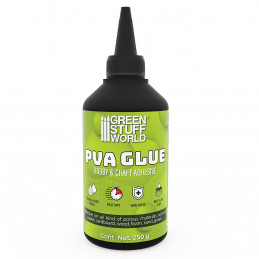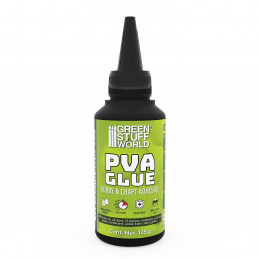- There are no more items in your cart
- Shipping
- Total €0.00
- Paint
- Model Paints
- Flexible Paints
- Auxiliary Paints
- Weathering and Pigments
- Water effects
- Miniature Paint Brushes
- Paint Accesories
- Texture paint
- Refillable paint pen
- Airbrushing
- Paint Rack
- Paint Spray
- Hobby Tools
- Hobby Tool Kit
- Modeling Tools
- Engraving tools
- Cutting Tools
- Texturing Tools
- Rolling Pins
- Static Grass Applicator
- Leaf Punches
- Photo Etched Tools
- Abrasive Products
- Thermoforming Machines
- Hobby Drill
- Modeling tweezers
- Clamps and Miniature Holders
- Putties and Materials
- Scenery and Resin
- Resin items
- Resin Busts and Figures
- Static Grass
- Grass Tufts
- Miniature Basing Materials
- Snow Modeling
- Hobby Sand
- Terrain for Miniatures
- Other Scenery
- Letters and Numbers for Modelling
- Photo Etched Model Parts
- Hobby Accessories
- Miniature bases
- Movement Trays
- Neodymium magnets
- Magnetic Sheet
- Modeling glue
- Wood bases
- Acrylic Display Blocks
- Lighting and electronics
- Hobby Lamps
- Photography
- Miniature Carry Case
- Wargaming mats
- Board games
- Waterslide Decals
- Miniature Display Cases
- SteamPunk and Beads
- Cosplay shop
- Wholesaler
- 3D printers
- OUTLET Offers
- Merchandising
- New Products
PVA Glue
What is PVA glue?
PVA glue, also known as polyvinyl acetate, is a type of adhesive that is widely used for various applications. It is a synthetic polymer composed of polyvinyl acetate, which is a rubbery and thermoplastic material. It is popular due to its versatility, ease of use, and non-toxic nature.
PVA glue is white in color and has a thick, viscous consistency. It is water-based, which means it can be easily diluted with water for different levels of viscosity. It will form a strong bond when it dries, making it suitable for a wide range of materials such as paper, wood, fabric, leather, and some plastics.
It is used in arts and crafts projects, woodworking, bookbinding, and as a general-purpose adhesive for everyday tasks. It is suitable for bonding porous surfaces together and provides a relatively fast drying time, although the exact drying time can vary depending on factors such as temperature, humidity, and the thickness of the application.
It is important to note that craft glue is a type of modeling glue that is not suitable for all applications. It may not be as effective for bonding non-porous surfaces, such as metals or glass, as it is primarily designed for porous materials. In those cases, specific adhesives tailored for those materials would be more appropriate.
How to use PVA Glue on Miniature Bases: A Step-by-Step Guide
There are several steps you can follow to achieve the desired results. Here's a guide on how to use it effectively:
- Gather your materials: You will also need, foam, rocks, grit, lightweight bits, hobby sand, acrylic paint, and any desired miniature water effects.
- Prepare the miniature base: Clean the miniature base and ensure it is free of any debris or dust.
- Applying the adhesive: Use a small brush or applicator to apply it onto the areas of the base where you want to attach foam, rocks, grit, or other lightweight bits. Apply a thin and even layer to ensure good adhesion.
- Attaching materials: Press the foam, rocks, grit, or lightweight bits onto the adhesive-covered areas of the miniature base. Gently hold them in place for a few moments to allow them to bond.
- Texture paste: If you want to create a texture paste, mix it with sand in a separate container. Add your choice of paint to achieve the desired color. Adjust the consistency by adding more ingredients until you achieve a thick paste.
- Applying texture paste: Use a palette knife or a small brush to spread the texture paste onto the desired areas of the base. Sculpt and shape the paste as desired to create texture and terrain features.
- Drying time: Allow the mix to dry thoroughly. The drying time can vary depending on the thickness of the application and other environmental factors such as temperature and humidity.
- Optional painting: Once the mixture has dried, you can paint them if desired. Use miniature paints to add color and detail to the base, enhancing the overall appearance.
- Water effects: If you wish to create water effects, such as a river or a pond, you can experiment. However, this can be a bit challenging and may require some skill. Apply it in thin layers to mimic the look of water and use additional techniques, such as adding transparent blue paint, to enhance the effect.
- PVA glue is also one of the materials needed to make artificial snow bases.
Remember to experiment and practice always on scrap materials before working on your final miniature bases. This will allow you to familiarize yourself with the product's behavior and achieve the desired results.
What is the best craft glue for wood kits?
White glue is one of the best glues for wood models for the following reasons:
- Strong adhesion ability on wood surfaces.
- Dries to a translucent white color, which does not affect the appearance of the wood.
- Non-toxic and safe for use on interior projects.
- Easy clean up and wash with water before drying.
- Moisture resistance once completely dry.
- Widely available and affordable.
- Dries quickly and forms a strong bond.
- Can be sanded and painted once dry.
- Ideal for a wide variety of woodworking and craft projects.
Polyvinyl Acetate features
Unlike other types of adhesives, PVA glue is non-toxic, easy to clean up, and dries clear. It can be easily applied with a brush or spreader, and excess product can be wiped away with a damp cloth. This makes it a great choice for DIY enthusiasts who want an adhesive that is easy to work with and doesn't require any special equipment or tools.
In addition to its bonding capabilities and ease of use, it is also a very versatile product that can be used for a wide range of applications, including woodworking, paper crafts, fabric crafts, and more. It is also compatible with a range of materials, making it an ideal adhesive for mixed-media projects that involve different types of materials.
One of its unique properties is its ability to be diluted with water. This allows for greater control over the viscosity making it easier to apply and reducing the risk of excess PVA glue. Diluting it with water can also help to extend its useful life, as it can be used for thinner applications.
The cure time for the PVA glue is dependent on the room temperature and the thickness of the application, with a complete cure time of six hours. The product comes in a practical "feeding bottle type" packaging that allows for easy application and uses directly on the model or base, extending the lifespan of the product.
What is PVA Glue used for?
PVA glue is one of the most commonly used adhesives in model making. This type of product is generally used in projects involving paper, cardboard, and wood, although in this sector it is the adhesive par excellence for fixing the vegetation of the scene to the miniature or diorama, such as flocking, static grass, or more complex vegetative elements (trees and shrubs or bushes of different kinds). It is effective, above all, on porous surfaces, but on compact surfaces, it is also capable of working with some efficiency.
On the other hand, it tolerates its dissolution in water very well. In fact, it is used as a varnish after mixing with water as it creates a transparent waterproof layer while providing gloss. Thus, it can be applied at the end of a craft or on finished puzzles when they are to be framed. In addition, to this mixture of water and PVA adhesive, newspaper or cellulose paper can be added to make a paste that is widely used in handicrafts to harden surfaces with papier-mâché. Popularly, this combination is known by the children's television program "Art Attack", an international program on handicrafts. To prepare it correctly, it is recommended to mix two parts of PVA glue and one part of water. Then wet the paper to be used in each craft, or place the paper on a surface and soak it in the mixture with the help of a paintbrush.
How long does it take for PVA glue to dry?
The time that needs an adhesive with these characteristics depends on the manufacturer of the same one because according to the balance of its ingredients, it can take more or less. Even so, it is usually recommended not to handle freshly glued wood for about a quarter of an hour, while chipboard will take a little longer, about 40 minutes. Less dense materials can be ready in a shorter time frame, provided they have been glued on a clean, dust-free surface. In addition, it is recommended to apply the adhesive on both sides if it is a non-absorbent material. Even so, it is estimated to reach the highest bond strength after 24 hours.
Finally, it should be noted that it is not suitable for outdoors, so using PVA glue in outdoor projects is not advisable.
How to clean it from brushes?
One of the best solvents for it is water. This type of adhesive should be removed from the brush by rinsing it thoroughly with water. If it is dry or stubborn, add soap to the mixture and make sure it is free of soap residue when cleaning is complete. It is also useful to heat water, add liquid soap, and soak the brushes by moving them in a circle, as if to remove freshly deposited paint residue. This can work for cleaning both adhesive and acrylic paint residue.
However you clean your brushes, remember to impregnate the tip with Green Stuff World's brush repair gel to increase the life of the bristles.
Not the type of glue you are looking for? You might be interested in cyanoacrylate glue.
 Cookie preferences
Cookie preferences







